Resources
About Us
AI in Smart Appliances Market: Size & Forecast by Component (Edge AI, ML Software), Appliance Type (Smart Refrigerators, IoT Home Systems) & End User - Global Analysis to 2030
Report ID: MRICT - 1041469 Pages: 205 Apr-2025 Formats*: PDF Category: Information and Communications Technology Delivery: 24 to 72 Hours Download Free Sample ReportThe global AI in smart appliances market is valued at USD 13.3 billion in 2025 and is projected to reach USD 81.9 billion by 2032, at a CAGR of 29.7% during the forecast period (2025-2032). The growth of global AI in smart appliances market is driven by increasing smart home penetration, advancements in AI technologies, and growing consumer demand for connected, intelligent home solutions.
Report Overview
This in-depth market research report analyzes the fast-evolving AI in smart appliances market, evaluating how artificial intelligence is converting traditional appliances to smart, connected systems that elevate efficiency and user experience. The report provides a strategic analysis of the market dynamics, growth projections till 2032, and competitive position over the global and regional/country level markets.
Market Dynamics Overview
Key Market Drivers & Trends
The overall AI enabled smart appliances market is primarily driven by increasing demand for energy efficiency, reducing costs of AI components, rapid smart home ecosystem adoption, and growing consumer preference for personalized experiences. The growing adoption of technologies like Edge AI and TinyML is transforming the landscape by enabling on-device intelligence with reduced cloud dependency. Privacy-focused technologies like Federated Learning are gaining traction as consumers become more data-conscious, while sustainability-centric features align with global environmental priorities.
Key Challenges
Despite growth prospects, the overall AI in smart appliances market faces challenges including premium pricing which is limiting mass adoption, fragmented ecosystem standards hampering interoperability, data privacy concerns, regulatory complexity across regions, and semiconductor supply chain vulnerabilities affecting production capabilities.
Growth Opportunities
The AI in smart appliances market offers several high growth opportunities. One key area is the growth in emerging markets, where increased urbanization and middle-class expansion are driving demand for smart home solutions. Predictive maintenance capabilities—powered by artificial intelligence—are also becoming more popular by saving appliance downtime and enhancing customer satisfaction. In addition, subscription-based artificial intelligence services such as virtual assistants, intelligent cooking guidance, and customized energy management solutions are building recurring revenue streams for service providers and manufacturers operating in this industry. Smart appliances integrated into AI-driven energy grids also enable the potential for real-time energy optimization and load balancing. Lastly, privacy-preservation AI models such as federated learning are becoming inevitable as manufacturers deal with increasing consumer demand for data protection while retaining smart functionality.
Market Segmentation Highlights
By Component
Hardware segment currently dominates the overall AI in smart appliances market, with AI chips and edge processors being fundamental components of smart appliances. Key hardware includes specialized AI processors, edge computing modules, sensors, and connectivity components that enable intelligent functionality. However, the Software segment, particularly embedded AI platforms and machine learning frameworks, is projected to grow at the highest CAGR of 33.7% through 2032 as manufacturers increasingly differentiate products through advanced software capabilities rather than hardware alone. The Services segment, including integration, training, and AI-as-a-Service offerings, is also witnessing significant growth during the forecast period.
By Technology
On the basis of technology, Edge AI holds the largest share of the overall AI in smart appliances market due to its critical role in enabling responsive, offline functionality in appliances without constant cloud connectivity. Machine Learning algorithms form the foundation for most appliance intelligence, while Natural Language Processing enables voice control capabilities that consumers increasingly demand. Computer Vision applications in appliances like refrigerators and security systems represent a significant growth potential. However, Emotion AI and Federated Learning segments are expected to experience the highest growth rates through 2032 as manufacturers focus on creating more intuitive user experiences while addressing privacy concerns. TinyML is gaining particular traction for low-power applications where energy efficiency is paramount.
By Appliance Type
Smart Refrigerators and Smart Entertainment Systems currently represent the largest market segments by value, with refrigerators benefiting from early AI adoption for food management and entertainment systems leveraging content recommendation algorithms. Smart Air Conditioners represent a significant segment due to energy optimization capabilities, while Smart Washing Machines have seen widespread adoption of basic AI features. However, Smart Security Systems and Smart Personal Care Devices are anticipated to show the highest growth rates during the forecast period mainly due to increasing home security concerns and the growing wellness technology trend. Smart Kitchen Appliances beyond refrigerators (multicookers, blenders) represent an emerging high-growth category as AI enhances cooking experiences.
By End User
The Residential segment dominates the overall AI in smart appliances market, accounting for approximately 70% of the market value in 2025, driven by consumer adoption of smart home technologies and increasing availability of mid-range AI-enabled appliances. However, the Commercial segment—particularly in hospitality and healthcare applications—is expected to grow at a faster pace through 2032 as businesses seek operational efficiencies and enhanced customer experiences through AI-enabled appliance systems. Within commercial applications, hospitality leads the market as hotels implement AI-enabled systems to enhance guest experiences, while healthcare applications focus on sanitation and monitoring capabilities.
By Geography
North America leads the global AI in smart appliances market followed by Europe due to high consumer purchasing power, advanced smart home penetration, and early technology adoption. The U.S. represents the largest market globally, while Germany leads the adoption in the European region. However, the Asia-Pacific region, particularly China and India, is projected to witness the highest CAGR during the forecast period of 2025-2032, driven by rapid urbanization, growing middle-class populations, and strong domestic manufacturing capabilities for both AI components and finished appliances. The Middle East & Africa region also shows promising growth potential, particularly in Gulf Cooperation Council countries, where smart city initiatives are driving adoption of advanced home technologies.
Competitive Landscape
The global AI in smart appliances market features a diverse competitive landscape with two distinct provider categories, with increasing consolidation through strategic acquisitions and partnerships as the market matures.
Software Providers
Google leads the software segment with its TensorFlow platform and Google Assistant integration capabilities, followed by Microsoft leveraging Azure AI and Cognitive Services. Amazon Web Services has gained significant traction through Alexa-enabled appliance integrations and AWS IoT services. Similarly, IBM and Oracle hold strong positions in commercial applications, while C3.ai and OpenAI are emerging with specialized AI capabilities for specific appliance applications. Software providers compete primarily on ecosystem integration capabilities, developer tools, and voice assistant performance.
Hardware Providers
NVIDIA and Intel dominate the hardware segment, with NVIDIA's GPUs increasingly used for intensive AI applications and Intel focusing on power-efficient edge processors. Qualcomm has gained significant share through specialized IoT chips, while Arm designs power many energy-efficient appliance systems. Samsung Electronics also holds the strong share of the market as both a component supplier (AI chips, SoCs) and an end-product manufacturer of AI-enabled appliances.
The market is characterized by increasing strategic partnerships between software and hardware providers to create integrated solutions, as well as collaborations with appliance manufacturers to develop specialized AI implementations. Major players are employing AI-as-a-Service models to create sustainable revenue streams beyond hardware sales.
As the market evolves, key companies will need to address affordability challenges to drive mass adoption, develop solutions for ecosystem interoperability, and implement robust privacy safeguards to earn consumer trust. The integration of AI capabilities must deliver tangible value through energy savings, performance improvements, or enhanced user experiences to justify premium pricing in competitive consumer markets.
|
Particulars |
Details |
|
Number of Pages |
205 |
|
Format |
PDF & Excel |
|
Forecast Period |
2025–2032 |
|
Base Year |
2024 |
|
CAGR (Value) |
29.7% |
|
Market Size (Value)in 2025 |
USD 13.3 Billion |
|
Market Size (Value) in 2032 |
USD 81.9 Billion |
|
By Component
By Technology
By Appliance Type
By End User
|
|
|
Countries Covered |
|
|
Key Companies |
Hardware Providers- NVIDIA Corporation, Intel Corporation, Qualcomm Technologies, Arm Ltd., MediaTek, NXP Semiconductors, Renesas Electronics, Samsung Electronics (AI Chips, SoCs), AMD, STMicroelectronics Software Providers- Google LLC, Microsoft Corporation, Amazon Web Services, IBM Corporation, Oracle Corporation, SAP SE, C3.ai, SAS Institute, PTC Inc., OpenAI |
The AI in smart appliances market is estimated to be valued at $13.3 billion in 2025 and is projected to reach USD 81.9 billion by 2032, at a CAGR of 29.7%
The AI in smart appliances market is projected to reach $81.9 billion by 2032, at a CAGR of 29.7% from 2025
The AI in smart appliances market analysis indicates substantial growth, with projections indicating that the market will reach $81.9 billion by 2032, at a CAGR of 29.7% % from 2025 to 2032.
The key companies operating in this market include NVIDIA Corporation, Intel Corporation, Qualcomm Technologies, Arm Ltd., MediaTek, NXP Semiconductors, Renesas Electronics, Samsung Electronics (AI Chips, SoCs), AMD, STMicroelectronics, Google LLC, Microsoft Corporation, Amazon Web Services, IBM Corporation, Oracle Corporation, SAP SE, C3.ai, SAS Institute, PTC Inc., and OpenAI among others.
Major trends shaping the market include voice-activated smart appliances, self-learning capabilities, remote monitoring and control, and seamless integration with smart home ecosystems.
North America leads the global AI in smart appliances market followed by Europe due to high consumer purchasing power, advanced smart home penetration, and early technology adoption
The growth of this market is driven by increasing consumer demand for connected homes, advancements in AI and machine learning technologies, rising disposable incomes, and growing awareness about energy efficiency and sustainability.


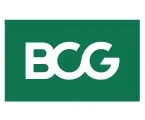





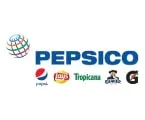
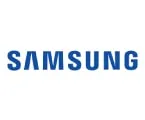






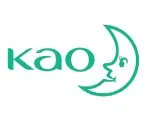

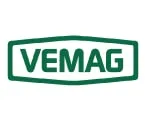





Published Date: Sep-2024
Published Date: Aug-2024
Published Date: Jul-2024
Published Date: May-2024
Please enter your corporate email id here to view sample report.
Subscribe to get the latest industry updates